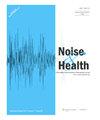Vibration Isolation with Spring Supported Concrete Floating Floors on Fitness Centers
IF 1.3
4区 医学
Q3 AUDIOLOGY & SPEECH-LANGUAGE PATHOLOGY
引用次数: 0
Abstract
Spring-supported concrete floating floors are often used as a high-end solution to mitigate noise and vibration disturbances in fitness centers. Suppliers of these floors typically provide impressive sound test results, but information regarding their low-frequency vibration isolation capabilities is scarce. In this study, the authors collected in-situ vibration data from an existing fitness center equipped with a 4-in (102-mm) thick spring-supported concrete floating floor while conducting various activities such as running on a treadmill, dropping a dumbbell, putting down a barbell and slamming a medicine ball on the floor. Frequency measurements revealed that entrapped air led to an increase in the natural frequency of the floating floor. The data demonstrated that floating slab effectively isolated noise and high-frequency vibrations, but was not able to isolate low-frequency vibrations. Additionally, a finite element model of the structure was developed, incorporating the floating floor and the base structural slab. The model was used to simulate treadmill running and weight drops, and calculated vibration levels were presented as heat maps across the entire floor. The model's predictions aligned closely with the actual measurements, demonstrating that vibration analysis based on finite element models is a valuable method to design effective mitigation strategies for fitness centers.健身中心弹簧支撑混凝土浮动楼板隔振
弹簧支撑的混凝土浮动地板经常被用作高端解决方案,以减轻健身中心的噪音和振动干扰。这些地板的供应商通常提供令人印象深刻的声音测试结果,但关于其低频隔振能力的信息很少。在这项研究中,作者从一个现有的健身中心收集了现场振动数据,该健身中心配备了一个4英寸(102毫米)厚的弹簧支撑混凝土浮动地板,同时进行了各种活动,如在跑步机上跑步,放下哑铃,放下杠铃和在地板上摔一个健身球。频率测量显示,被困的空气导致浮动地板的固有频率增加。结果表明,浮板能有效隔离噪声和高频振动,但不能有效隔离低频振动。此外,还建立了包含浮动楼板和基础结构板的结构有限元模型。该模型用于模拟跑步机的运行和体重下降,计算出的振动水平以整个楼层的热图形式呈现。该模型的预测与实际测量结果非常吻合,表明基于有限元模型的振动分析是设计健身中心有效缓解策略的一种有价值的方法。
本文章由计算机程序翻译,如有差异,请以英文原文为准。
求助全文
约1分钟内获得全文
求助全文
来源期刊

Noise & Health
AUDIOLOGY & SPEECH-LANGUAGE PATHOLOGY-PUBLIC, ENVIRONMENTAL & OCCUPATIONAL HEALTH
CiteScore
2.10
自引率
14.30%
发文量
27
审稿时长
6-12 weeks
期刊介绍:
Noise and Health is the only International Journal devoted to research on all aspects of noise and its effects on human health. An inter-disciplinary journal for all professions concerned with auditory and non-auditory effects of occupational, environmental, and leisure noise. It aims to provide a forum for presentation of novel research material on a broad range of topics associated with noise pollution, its control and its detrimental effects on hearing and health. It will cover issues from basic experimental science through clinical evaluation and management, technical aspects of noise reduction systems and solutions to environmental issues relating to social and public health policy.
 求助内容:
求助内容: 应助结果提醒方式:
应助结果提醒方式:


